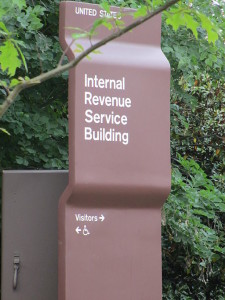 One of the most controversial grey areas of tax law is the “independent contractor vs employee” issue.
One of the most controversial grey areas of tax law is the “independent contractor vs employee” issue.
Most small businesses hire workers to perform services, i.e. outsourcing.
Is the person you hire an employee or an independent contractor?
Does it really matter? You better believe it does!
The answer to that question is critical. And if you don’t answer it correctly, you can end up in big trouble.
If you treat someone as a contractor and that person is really an employee, the IRS can re-classify that person as an employee and you’ll be responsible to pay the taxes that should have been withheld from his/her paychecks, plus the employer’s payroll taxes, plus penalties and interest for late payment.
Ouch!
So it’s in your best interest to get this right.
Here are some tips to help you make the correct classification, courtesy of the IRS:
7 Things Every Business Owner Should Know
About Independent Contractors vs. Employees
1. The IRS uses three characteristics to determine the relationship between businesses and workers:
– Behavioral Control covers facts that show whether the business has a right to direct or control how the work isdone through instructions, training or other means.
– Financial Control covers facts that show whether the business has a right to direct or control the financial and business aspects of the worker’s job.
– Type of Relationship relates to how the workers and the business owner perceive their relationship.
2. If you have the right to control or direct not only what is to be done, but also how it is to be done, then your workers are most likely employees.
3. If you can direct or control only the result of the work done — and not the means and methods of accomplishing the result — then your workers are probably independent contractors.
4. Employers who misclassify workers as independent contractors can end up with substantial tax bills. Additionally, they can face penalties for failing to pay employment taxes and for failing to file required tax forms.
(As I said before…..OUCH!)
5. Workers can avoid higher tax bills and lost benefits if they know their proper status.
6. Both employers and workers can ask the IRS to make a determination on whether a specific individual is an independent contractor or an employee by filing a Form SS-8, Determination of Worker Status for Purposes of Federal
Employment Taxes and Income Tax Withholding, with the IRS.
7. You can learn more about the critical determination of a worker’s status as an Independent Contractor or Employee at IRS.gov by selecting the Small Business link.
Additional resources include:
— IRS Publication 15-A – Employer’s Supplemental Tax Guide
— IRS Publication 1779 – Independent Contractor or Employee
— IRS Publication 1976 – Do You Qualify for Relief under Section 530?
